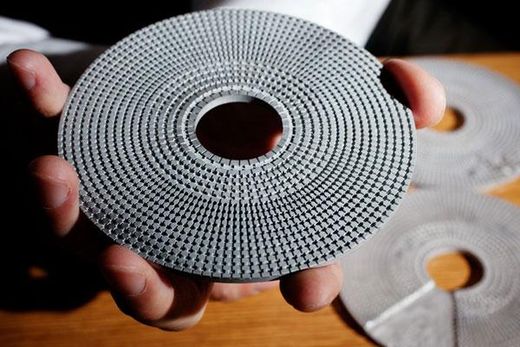
The material essentially tricks the sonar - a system used to identify underwater objects by analyzing the differences between the emitted sound waves and the returning waves, which have bounced off of the submarine, for example.
About the shape and size of a compact disc, the material is made up of concentric rings that guide sound waves around its surface. When an object is placed in the center hole of the two-dimensional disc, sound waves move around it as if it weren't there and re-form on the other side of the object without being distorted. The material is in effect invisible to sound.
"No matter what shape or material you place within that hole it appears as if, when the sound passes through the disc, there's nothing there," said Nicholas Fang, a professor of mechanical science and engineering at the University of Illinois at Urbana-Champaign, who led the development of the material.
Acoustic invisibility cloaks have been theorized in the past, but this is the first time one has been constructed in the lab. While this is an exciting step, there's still a long way to go before it could be used to add high-tech stealth to military submarines, Fang said.
Other applications for this technology include shielding medical devices and sensors from sound interference and soundproofing products.
To make their acoustic cloak, the researchers designed an aluminum disc with 16 concentric rings consisting of small cavities connected by channels. Each ring has a different index of refraction for sound, which means sound waves interact with each differently.
"Basically, what we want to do is to create an index of refraction for sound instead of light by using the metamaterial structure," Fang said. "[The sound] has to bounce within the guided structures but in such a gradual way that you won't see any direct reflection."
The result: Sound waves at one end of the object appear untouched on the other side of the object, making the object invisible to sonar devices.
The researchers tested their cloaking device with several objects of varying shapes, including a cylinder.
Fang and his team are now working on 3-D structures as well as scaling up the device. When will it be ready for prime time?
"If we are just talking about a small device, for example this could be used in a medical application pretty soon, maybe five years from now," Fang said. "But if we are trying to create something for Harry Potter, it's too early to predict."
Fang and his colleagues detail their findings in a paper that was accepted for publication in the journal Physical Review Letters.



Reader Comments
to our Newsletter